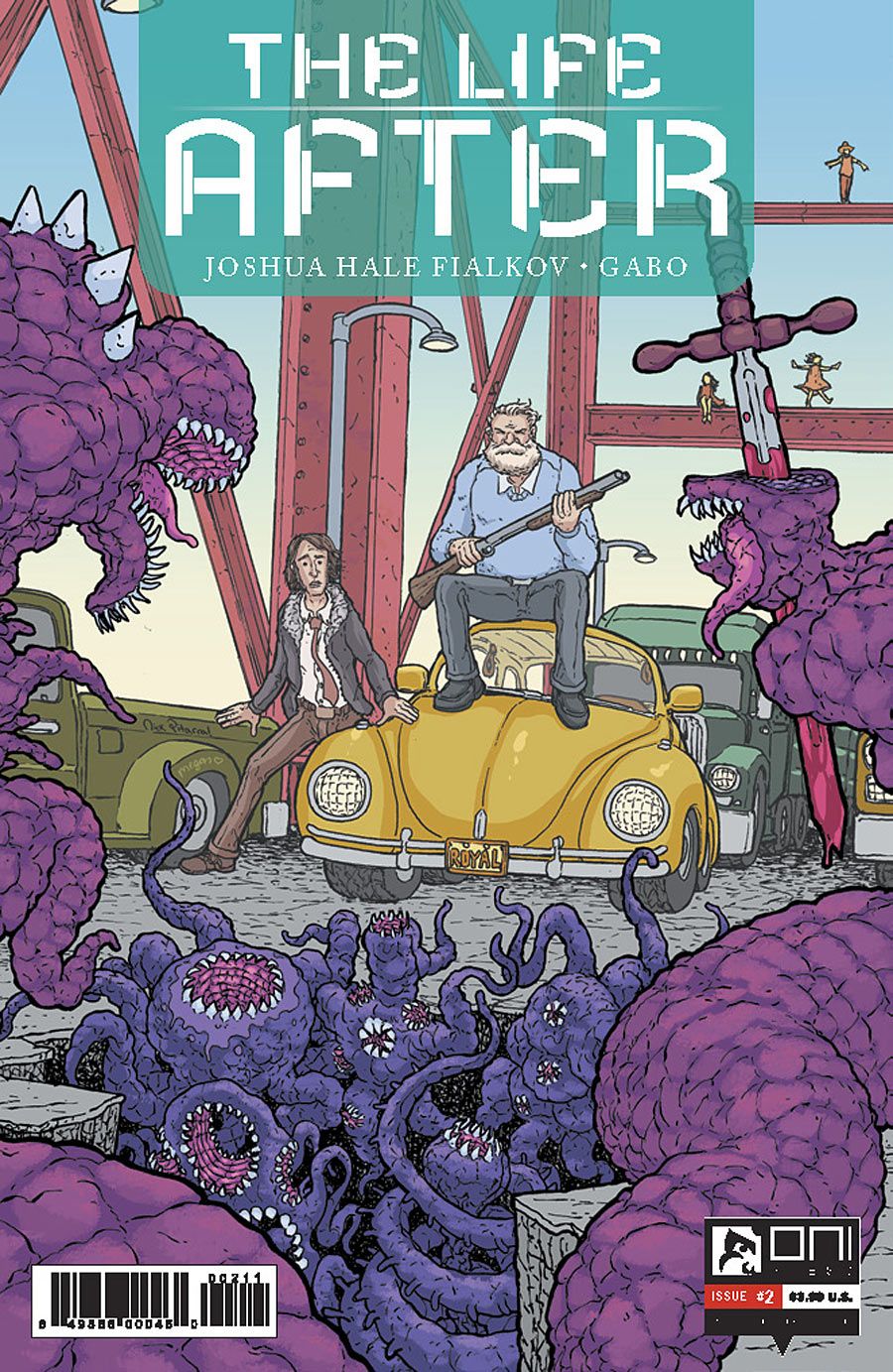Diving deeper into the logistics of purgatory and Jude's partnership with Hemingway, "The Life After" #2 builds some serious momentum. Fialkov and Gabo provide a strong balance of world building and character building that gives this series the context and connection it needed. Though I was personally lukewarm about the first issue, the second has me quite excited for issue #3.
Crucially for a second issue, the creative team has a firm grip on their pacing and story building. The issue reads effortlessly, flipping between Jude's struggles on the ground and the goings-on in the afterlife control room. The reader comes to understand much more of what's going on while also getting to connect with Jude and Hemingway. Where the first issue could be a tad confusing, issue #2 is clear while still leaving me with important questions. By letting the reader in more, Fialkov has clarified and heightened his stakes. It's an excellent example of how to write serialized fiction.
I'm also glad that the plot gets away from Jude's obsession with the girl on the bus, which read like the beginning of a tired Manic-Pixie-Dream-Girl-as-savior-and-object story. (A conceit which is admittedly inverted by the events of issue #1.) The strange imagining of purgatory in "The Life After" is so wonderfully weird and surprisingly entertaining; I'm glad it's taken center stage.
Admittedly, the script still has a few problems. As with almost all renderings of historical idols, the version of Hemingway presented here is very sanitized. The toxic ideas about masculinity that plagued him are replaced with blustery punchlines. Now, I don't ask for an exhaustive and melancholy biography, but in a series that's dealing with suicide, a sharper nod to those demons might be appreciated. (To be fair, it might be coming.) The other suicide backstories are also a bit cliche, but Gabo redeems them with some lingering, desolate panels.
In general, Gabo gives "The Life After" much of its unique atmosphere. This afterlife is at once more deranged and more darling than most. It's purgatory as the modern city, with its bustle, sprawl, lack of connection - even surveillance-state overlords monitoring everyone via computer. Gabo uses unexpectedly warm colors, shading the city as if it's a mild, partly sunny day. This stands in marked contrast to the sharp green glow of the control room and the stark white of the demonic upper management suite. On the surface, this world looks so regular, but underlying it all is a truly monstrous system. It's a wonderfully strange (and metaphor-ready) construct.
Gabo's art similarly emphasizes the intersection between the mundane and the monstrous. As Jude walks through purgatory, it's all familiar scenes of skyscraper and steel bridge, just like any city. Gabo takes time to linger on the architecture, emphasizing these elements of normalcy, so that when the creepy stuff comes it's even more jarring. And it does get creepy in this issue. The team is at their most gruesomely creative in both a full-page spread of what I assume is Hell, and a look at apparent mastermind Aloheynu (as in Eloheinu?). Gabo's vision of horror is disturbingly fleshy, all guts and fat.
Trippy and curious, "The Life After" #2 is a strong leap forward for the series.

